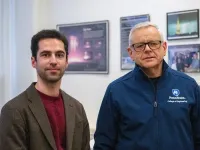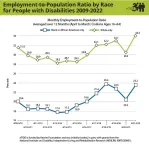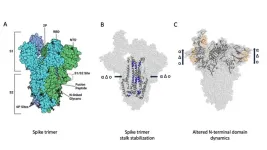(Press-News.org) Long thought of as “brain glue,” the star-shaped cells called astrocytes—members of a family of cells found in the central nervous system called glial that help regulate blood flow, synaptic activity, keep neurons healthy, and play an important role in breathing. Despite this growing appreciation for astrocytes, much remains unknown about the role these cells play in helping neurons and the brain process information.
“We believe astrocytes can add a new dimension to our understanding of how external and internal information is merged in the brain,” said Nathan Smith, MS, PhD, associate professor of Neuroscience at the Del Monte Institute for Neuroscience at the University of Rochester. He and fellow authors from the Center for Translational Neuromedicine at the University of Copenhagen highlight this in an opinion article out today in Trends in Neuroscience. The piece explores how astrocytes may be a key player in the brain’s ability to process external and internal information simultaneously. “More research on these cells is necessary to understand their role in the process that allows a person to have an appropriate behavioral response and also the ability to create a relevant memory to guide future behavior.”
Guiding information in the brain
How our body integrates external with internal information is essential to survival. When something goes awry in these processes, behavioral or psychiatric symptoms may emerge. Smith and co-authors point to evidence that astrocytes may play a key role in this process. Previous research has shown astrocytes sense the moment neurons send a message and can simultaneously sense sensory inputs. These external signals could come from various senses such as sight or smell. Astrocytes respond to this influx of information by modifying their calcium Ca2+ signaling directed towards neurons, providing them with the most suitable information to react to the stimuli. The authors hypothesize that this astrocytic Ca2+ signaling may be an underlying factor in how neurons communicate and what may happen when a signal is disrupted. But much is still unknown in how astrocytes and neuromodulators, the signals sent between neurons, work together.
“Astrocytes are an often-overlooked type of brain cell in systems neuroscience,” Smith said. “We believe dysfunctional astrocytic calcium signaling could be an underlying factor in disorders characterized by disrupted sensory processing, like Alzheimer’s and autism spectrum disorder.”
Building on the past to reach the future
Smith has spent his career studying astrocytes. As a graduate student at the University of Rochester School of Medicine and Dentistry, Smith was part of the team who discovered an expanded role for astrocytes. Apart from absorbing excess potassium, astrocytes themselves could cause potassium levels around the neuron to drop, halting neuronal signaling. This research showed, for the first time, that astrocytes did more than tend to neurons, they also could influence the actions of neurons.
“I think once we understand how astrocytes integrate external information from these different internal states, we can better understand certain neurological diseases. Understanding their role more fully will help propel the future possibility of targeting astrocytes in neurological disease,” said Smith.
The communication between neurons and astrocytes is far more complicated than previously thought. Evidence suggests that astrocytes can sense and react to change—a process that is important for behavioral shifts and memory formation. Authors believe discovering more about astrocytes will lead to a better understanding of cognitive function and lead to advances in treatment and care.
Additional co-authors include Rune Rasmussen, PhD, Antonis Asiminas, PhD, Eva Carlsen, PhD, and Celia Kjaerby, PhD, from the University of Copenhagen. This research was supported by the National Institutes of Health, the National Science Foundation, the European Union under the Marie Skłodowska-Curie Fellowship, the ONO Rising Star Fellowship, the Lundbeck Foundation Experiment Grant, and the Novo Nordisk Foundation.
END
The stars in the brain may be information regulators
2023-03-31
ELSE PRESS RELEASES FROM THIS DATE:
The Institut Pasteur and the University of São Paulo sign articles of association to establish the Institut Pasteur in São Paulo
2023-03-31
On Friday March 31st, 2023 at a ceremony in Paris, the Institut Pasteur President, Professor Stewart Cole, and the University of São Paulo (USP) Rector, Carlos Gilberto Carlotti Junior, signed articles of association for the Institut Pasteur in São Paulo, a private non-profit organization under Brazilian law. The mission of the institute, an associate member of the Pasteur Network, is to conduct research in the field of biology that contributes to the development of human health, and to promote outreach, education, innovation and knowledge transfer activities and public health measures.
The Institut Pasteur ...
Mathematical model provides bolt of understanding for lightning-produced X-rays
2023-03-31
UNIVERSITY PARK, Pa. — In the early 2000s, scientists observed lightning discharge producing X-rays comprising high energy photons — the same type used for medical imaging. Researchers could recreate this phenomenon in the lab, but they could not fully explain how and why lightning produced X-rays. Now, two decades later, a Penn State-led team has discovered a new physical mechanism explaining naturally occurring X-rays associated with lightning activity in the Earth’s atmosphere.
They published their ...
nTIDE March 2023 Deeper Dive: Intersection of race and disability perpetuate inequalities in employment impacting Black/African American people with disabilities
2023-03-31
East Hanover, NJ – March 31, 2023 – Since the pandemic, gains in the labor market have been slower to materialize for black/African American people with disabilities compared to their white counterparts, according to experts speaking last Friday during the nTIDE Deeper Dive Lunch & Learn Webinar. They discussed potential factors underlying why the disability employment gap is wider among members of the black/African American population when compared to the white population and how to integrate measures to effect change.
Using data from the U.S. Bureau of Labor Statistics (BLS) for persons ages 16-64, the monthly employment-to-population ratio averaged ...
Researchers uncover the first steps driving antibiotic resistance
2023-03-31
Antibiotic resistance is a global health threat. In 2019 alone, an estimated 1.3 million deaths were attributed to antibiotic resistant bacterial infections worldwide. Looking to contribute a solution to this growing problem, researchers at Baylor College of Medicine have been studying the process that drives antibiotic resistance at the molecular level.
They report in the journal Molecular Cell crucial and surprising first steps that promote resistance to ciprofloxacin, or cipro for short, one of the most commonly prescribed antibiotics. The findings point at potential ...
Study reveals new insights into body salt handling
2023-03-31
HUNTINGTON, W.Va. – A new study led by Marshall University researchers focuses on a novel mechanism of the body’s regulation of salt balance.
The kidney plays a central role in the body’s ability to maintain an appropriate sodium balance, which is critical for the determination of blood pressure. Disorders of sodium balance contribute to the development and progression of many common diseases, including hypertension, heart disease and stroke.
Na/K-ATPase (NKA) is the enzymatic machinery that drives absorption of sodium along the renal proximal tubule. As ...
A tighter core stabilizes SARS-CoV-2 spike protein in new emergent variants
2023-03-31
UNIVERSITY PARK, Pa. — Just as a tight core is a component of good physical fitness for humans, helping to stabilize our bodies, mutations that tightened the core of the SARS-CoV-2 spike protein in new variants may have increased the virus’s fitness.
New research led by Penn State reveals that the stem region of the spike protein became progressively tighter over time, and the team thinks this likely improved the virus’s ability to transmit through nasal droplets and infect host cells once in the body. The team said the stem region of the protein that emerged in the most recent Omicron variants is as rigid as it can get, which could ...
Status epilepticus: New inflammatory markers to improve patient care
2023-03-31
A rare and nevertheless formidable event in the landscape of epilepsies, New-Onset Refractory Status Epilepticus (NORSE) is a form of prolonged seizure in which the neurons of the epileptic focus endure a continuous discharge of neurotransmitters. It is a medical emergency requiring intensive care management. Indeed, it can cause significant long-term neurological sequelae and is associated with an average mortality rate of 12% in children and 16 to 27% in adults. NORSE can occur in response to an infection or tumor development. However, its origin remains unknown in half of the affected patients despite extensive clinical and biological ...
Making rare cell types visible: Researchers are developing a new method
2023-03-31
The human body contains more than 30 trillion cells. Until recently, the sheer number of cells in the organism meant that approaches to understanding human diseases and developmental processes based on the analysis of single cells were a futuristic vision. The development of new sequencing methods is currently revolutionising our understanding of cellular heterogeneity. These technologies can detect rare or even new cell types by extracting and sequencing the genetic information from the cells based on ribonucleic acid chains.
In cooperation ...
More than 1,200 LOINC® registrants represent 78 countries for version 2.74 webinar
2023-03-31
INDIANAPOLIS -- LOINC®, an international data standard maintained at Regenstrief Institute, hosted an educational release webinar for version 2.74. More than 1,200 participants signed up, representing 78 countries.
The hour and a half webinar served as an opportunity for the LOINC team to introduce and explain the new concepts from the 2.74 release update. Participants were presented with opportunities to learn more about each new concept and ask questions.
LOINC, short for Logical Observation Identifiers Names and Codes, is a global standard for health terminology. Created and maintained at Regenstrief, LOINC enables the identification, exchange and collection of data across ...
NRG Oncology combined trial long-term results indicate that pathologic complete response is prognostic of outcomes for soft tissue sarcoma patients
2023-03-31
Combined long-term survival results from nonrandomized phase II trial NRG Oncology RTOG 0630 and the ancillary analysis of the combined NRG-RTOG 0630/9514 trials indicate that pathologic complete response (pCR) is associated with improved survival outcomes for patients with localized soft tissue sarcoma (STS) who receive preoperative chemoradiotherapy or radiotherapy. This data suggests that pCR can be used as a prognostic factor for clinical outcomes in future STS research. These results were recently published in the JAMA Oncology.
NRG-RTOG 0630 and 9514 both evaluated STS patients who were receiving either preoperative image-guided radiotherapy (IGRT; 0630) or neoadjuvant ...



